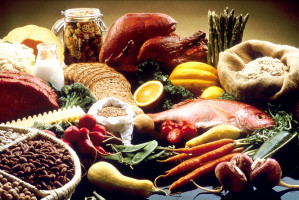
A new study, published in The American Journal of Clinical Nutrition, shows that the highest levels of blood selenium or of selenoprotein P, the protein that distributes selenium from the liver around the body, are associated with a decreased risk of developing liver cancer (particularly hepatocellular carcinoma), even when all other major liver cancer risk factors are taken into account.
The study also shows that selenium level is not associated with the development of gall bladder or biliary tract tumours.
The research is a joint project involving the International Agency for Research on Cancer (IARC), the Royal College of Surgeons in Ireland (RCSI), Charité Medical School Berlin, and collaborators in the European Prospective Investigation into Cancer and Nutrition (EPIC).
Selenium is a trace mineral micronutrient that is found in foods like shellfish, salmon, Brazil nuts, meat, eggs, grains, and onions.
However, selenium levels in foods depend largely on the levels of selenium in the soil where the food is grown and animals graze.
Soil levels tend to be low in many regions in Europe, contributing to lower body levels of selenium in those populations compared with people living in regions with higher soil selenium concentrations, such as North America.
In humans, selenium is essential, particularly for the effective functioning of the immune system and in controlling oxidative processes linked to cancer development.
“The research findings tentatively suggest that where selenium is suboptimal, increasing selenium intake may be a further strategy for liver cancer prevention in addition to avoiding alcohol consumption, maintaining a healthy body weight, and stopping smoking,” says lead researcher Dr David Hughes of the Department of Physiology and Centre for Systems Medicine of the RCSI in Dublin, Ireland. “However, this is based on a single study with a modest number of liver cancers, and thus our results need to be validated by further studies before any public health recommendations can be made.”
The study was based on the EPIC cohort, which is composed of more than half a million participants across 10 European countries, using a case–control design of 121 liver cancers and 140 gall bladder and biliary tract cancers matched to equal numbers of individuals free of cancer within the cohort.
Blood levels of selenium and selenoprotein P were measured in the study participants by the laboratory of Dr Lutz Schomburg at Charité Medical School Berlin.
In 2012, worldwide, there are estimated to have been 782 000 new cases of liver cancer. It is the second most common cause of death from cancer worldwide, estimated to have been responsible for nearly 746 000 deaths in 2012 (9.1% of all cancer-related deaths that year).
The prognosis for liver cancer is very poor (with an overall ratio of mortality to incidence of 0.95), so the geographical patterns in incidence and mortality are very similar.[2]
“The incidence of liver cancers is increasing in developed countries. Liver cancers are often diagnosed at late stages and have limited treatment options,” says IARC scientist Dr Mazda Jenab, one of the study’s authors. “Further research is needed into the modifiable determinants of these cancers and effective prevention strategies.”